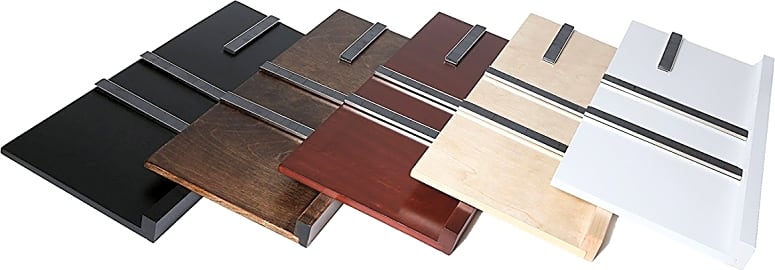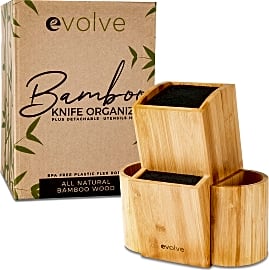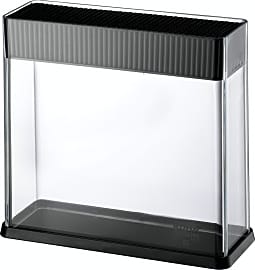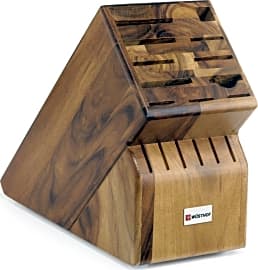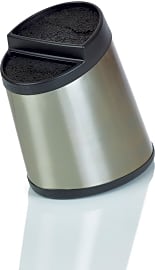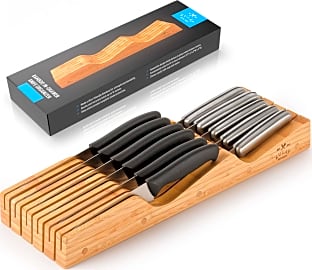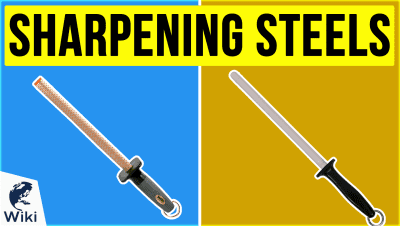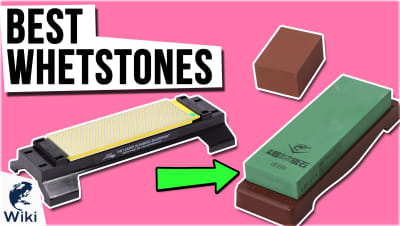The 10 Best Knife Blocks

This wiki has been updated 43 times since it was first published in August of 2015. Kitchen storage doesn't have to be boring. These knife blocks are not only decorative, but will hold any chef's most prized possessions securely and keep them handy to get to as well. Whether you want to keep tools out of sight or show them off, there are a variety of models that can be mounted on the wall or underneath a cabinet, stood on the countertop, or placed in a drawer. When users buy our independently chosen editorial choices, we may earn commissions to help fund the Wiki.
Editor's Notes
April 23, 2021:
We decided to continue recommending our current selection with no changes, and we also want to reiterate something that's often overlooked. When most people think of knife blocks, they think of bulky, wooden models like the Shenzen Universal and Wusthof Acacia. These are absolutely good products, but you should take special care to keep them clean. This is why we really like the open-face design of the ADMLC H1 and ultra-stlyish Boker Makassar. The Kyocera KBlock3 is somewhat of a hybrid of the two styles, and its wall mount capability makes it especially convenient.
March 19, 2020:
Traditionally, the term "knife block" invokes an image like the Shenzen Universal or Wusthof Acacia, a large, wooden block with slots in it where knives hide when they're not in use. Make no mistake, it's a great choice, but there's a reason why there are only a couple like that on our list. That classic design isn't great for blade health and it tends to hold onto moisture if knives aren't properly dried off before storage, so it takes a little extra attention to detail to keep everything clean and working just right. The Shenzen has the advantage of being made of bamboo, which has natural antibacterial properties, while acacia is especially hard and has wide slots that you shold be able to clean with the right brush (although we'd advise blasting it with some compressed air afterwards to make sure it's completely dry). They also both have slots for honing rods, which is something you need to have if you want to take perfect care of your blades.
Instead of the traditional wooden slots, the Kapoosh Rondelle and Evolve Bamboo use a set of flexible plastic rods to make it easy to store knives at any angle -- they're both also great for unusually shaped blades. One major plus of those two is that the plastic rods are removable and dishwasher safe, so you can clean them as frequently as you like. The Kuhn Rikon Vision combats the cleanliness problem by giving you full visual access, as well as a removable rack, so it's easy to clean inside as well. The Totally Bamboo 20-2091 and Kyocera KBlock3 are both recommended because of their low profile and open design, so they, too, are easy to keep tidy and free from germs.
Of course, the other alternative is to avoid putting your high-end knives inside anything at all. After all, if you're the proud owner of a fancy carbon-steel chef's knife, the only thing that's as important as preventing rust and keeping it sharp is making sure that you and your guests can see your knife collection at all times. For that, we'd recommend the ADMLC H1 if you're on a budget, and the Boker Makassar if you have a little more to spend and really want to show off your collection. If easy access is more your thing and you'd rather keep your tools out of sight, the Drop Block DB22 is a highly convenient device with a spring-loaded hinge and three high-strength magnet strips.
Common Ways People Ruin Their Knives
While hand washing the dishes may be time-consuming, it's the only way one should clean their knives.
A quality knife set is an investment and should be treated with care. In addition to storing these tools in a good knife block, there are certain habits one can avoid to prolong their lives. One should never put their knives in a drawer. The blades of unsheathed knives rub against other items and can become dull. Having a loose knife sitting in a frequently used drawer also poses the risk of cuts; in fact, accidental kitchen injuries cause thousands of emergency room visits per year.
While hand washing the dishes may be time-consuming, it's the only way one should clean their knives. Quality knives should never go in the dishwasher because the chemicals in the detergent can cause corrosion to stainless steel. Plus, while the knives are in the dishwasher, they bang up against other items and can again become dull. Running stainless steel knives through the dishwasher can also cause them to form rust. While rust itself isn't toxic in small amounts, a rusty blade won't get or stay sharp, and dull knives are a recipe for injuries.
Another common habit that can deteriorate a knife's sharp blade is using the tool to scrape food particles off of a cutting board. If one does this several times a day, they can quickly dull a knife's blade. A simple solution to this problem is to turn the knife over and use the side opposite the edge -- also known as the spine -- to clean off cutting boards.
The Different Styles Of Knife Blocks And Their Attributes
For those who are limited on counter space, a knife block that can be laid flat in a drawer or mounted on a wall can be useful. While one ideally never places a damp knife back in their block, most people will do it at some point and time. If you believe you may be guilty of this at some point in the future, consider a bamboo-built model. This type of wood resists water, so it will not warp if you accidentally do put wet knives inside of it. Bamboo is far less porous than other types of wood so it absorbs very little bacteria.
Bamboo is far less porous than other types of wood so it absorbs very little bacteria.
Considering that cutting boards are some of the most germ-infested items in one's home, some bacteria is bound to travel with a knife into the block. If the block is made from bamboo, the bacteria cannot seep into it and continuously spread onto subsequent knives.
One popular space-saving style of knife block resembles a drawer. This type of block can be attached beneath a cabinet, and slides out, presenting knives which are usually firmly held in place by magnetic strips, and spread out across the wood. Because knives do not need to be inserted into this block, their blades can remain sharper. This style of knife block may, however, not be safe for households that have children as it leaves sharp items rather exposed. One option that neither dulls knife blades or leaves them exposed is a block that contains plastic flex rods. These small rods barely apply pressure to knives, while still holding them in place.
A common nuisance of many knife blocks is that the user cannot see which knife they are pulling out when they grab a handle. Chefs with extensive knife sets should consider an entirely see-through block, so they always know which knife they are retrieving. Many blocks have angled tops for easy knife removal, too. Some also have a designated slot for kitchen shears.
Essential Knife Safety Rules
Chefs should never cut into food immediately after sharpening their blades. The process of sharpening produces microscopic pieces of metal that can infiltrate your food. Rinse and wipe off knives after sharpening them, and before putting them on any food. Using a dull, unsharpened knife also poses certain risks. When your knife is not sharp enough, you are prone to apply more pressure to your food when cutting it. This puts you at risk of losing control of the knife. Never cut with a dull knife, and try to use mostly wooden cutting boards since these do not have as slippery of a surface as silicone or plastic ones do.
It's also important that one doesn't leave food residue on their knives for long periods of time. The acids in food can corrode a knife, which can also result in unwanted materials in one's food, as well as weaken the blade. Leaving a sharp knife in a sink full of water is not only bad for the blade, but it is also a safety hazard. Someone can easily put their hand into the murky water, unaware of the knife's presence, and cut themselves.
Another safe practice is never putting a knife near the edge of a counter. This rule may seem obvious, but when one is rapidly preparing food and reaching for several items, they may not think of it. If a knife's handle is hanging off of a counter, it's very easy for a cook to hit it, sending the knife flying up and cutting them.





